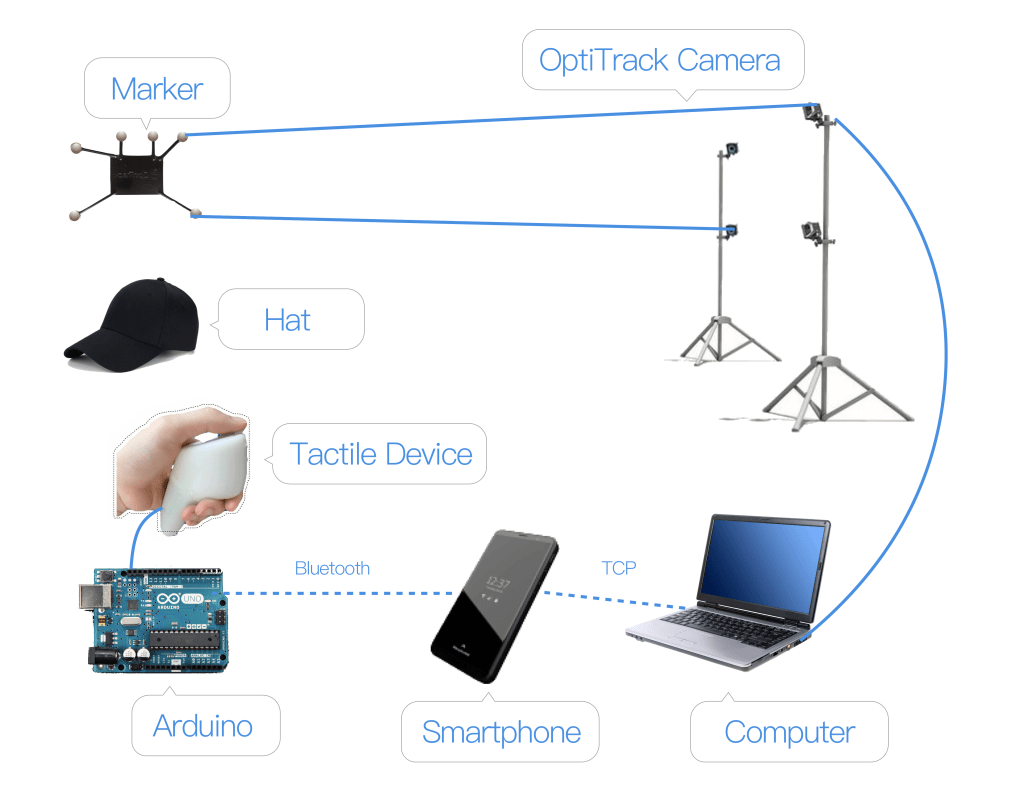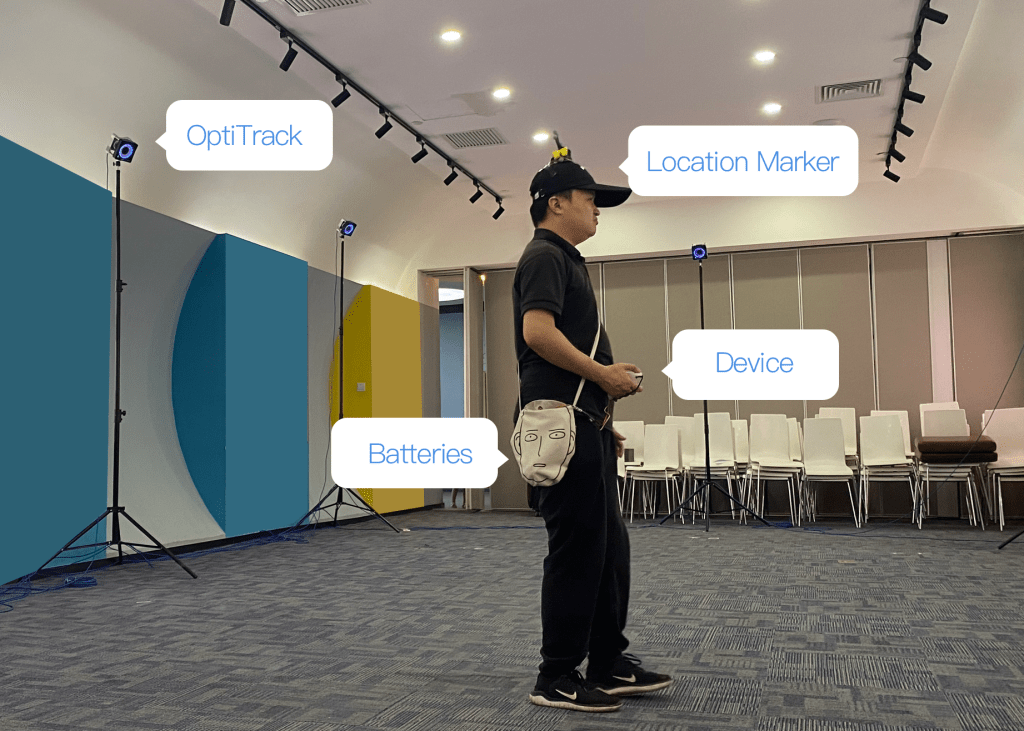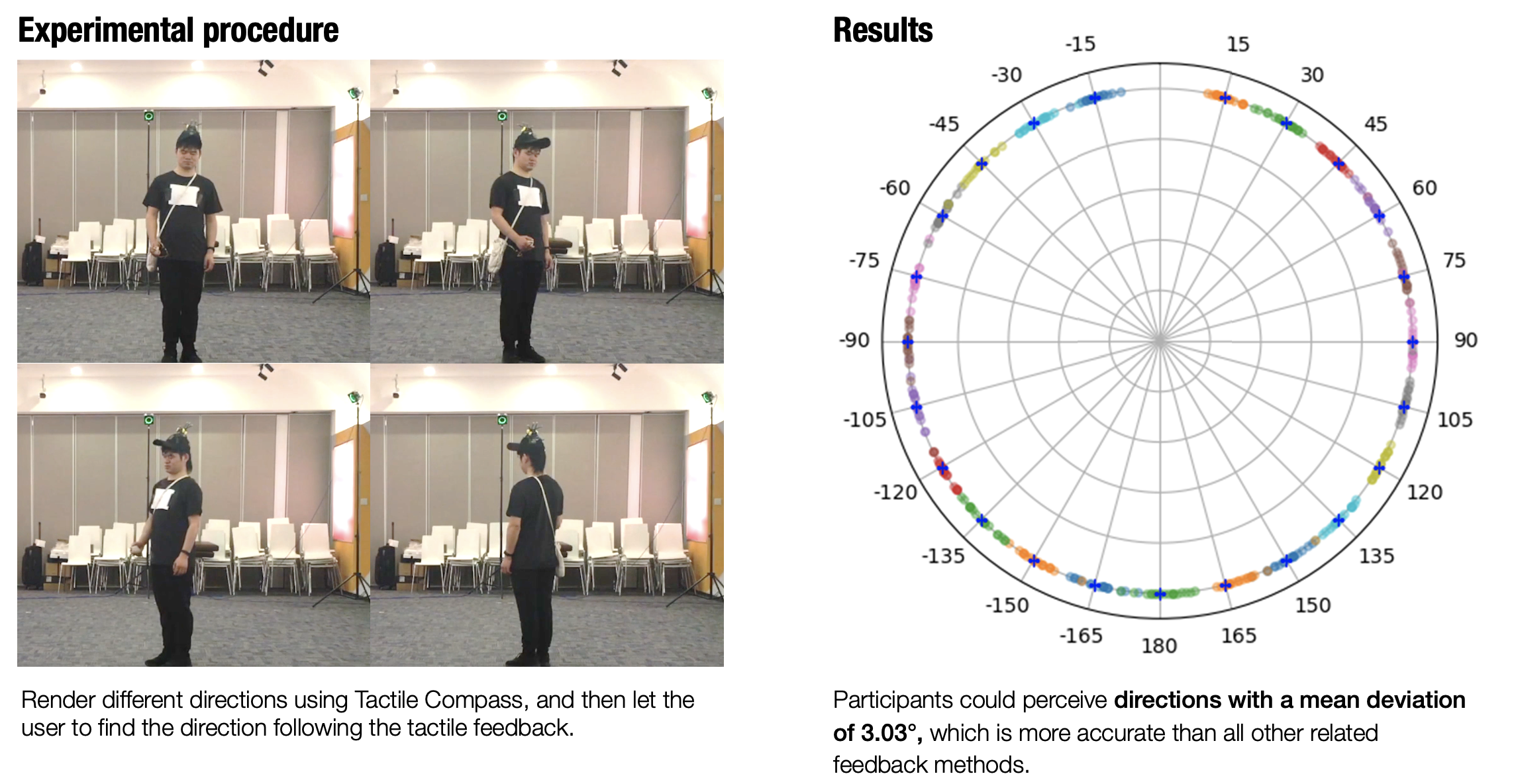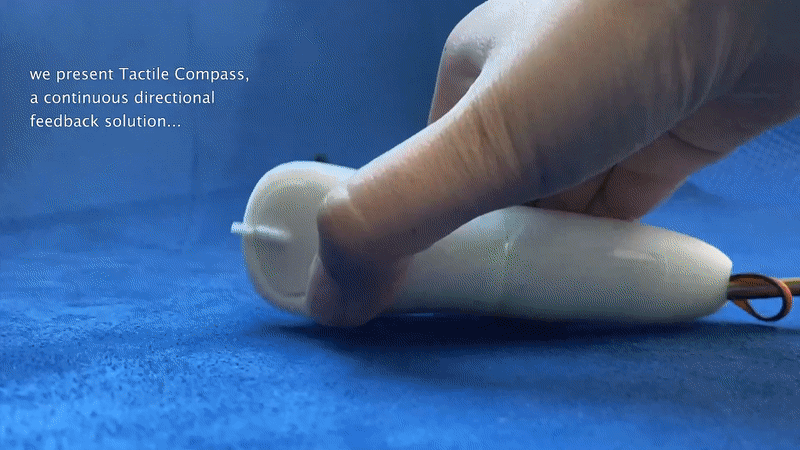2020-2021
Guanhong Liu*, Tianyu Yu*, Chun Yu, Haiqing Xu, Shuchang Xu, Ciyuan Yang, Feng Wang, Haipeng Mi, and Yuanchun Shi
We focused on navigation feedback design for visual imparied People. We proposed the framework of the study on condinous and directional feedback for navigation, developed an in-lab experimental platform, and studied the performance on different feedback solutions. Two works were presented.
We presented Tactile Compass, a hand-held device that provides continuous directional feedback with a rotatable needle pointing toward the planned direction, which enabled participants to reach the target direction in place with a mean deviation of 3.03° and smoothly navigate along paths of 60cm width, with a mean deviation from the centerline of 12.1cm. We presented LightGuide, a directional feedback solution that indicates a safe direction of travel via the position of a light within the user’s visual field, which showed better performance than the baseline researches.
Publications:
Contributions:
- Full participation in Tactile Compass, including tactile feedback design, algorithm development, prototype development, user study, and technical part of the publication.
- Developed an in-lab navigation platform with directional feedback, including OptiTrack setting up for localization, Arduino and Android development of wireless tactile devices, and python codes of path-following navigation algorithm.
- Conducted quantitative analysis of user studies, using signal filtering, spectrum analysis, kinematics modelling, etc.
Tactile Compass
Tactile compass design
Accurate and effective directional feedback is crucial for an electronic traveling aid device that guides visually impaired people in walking through paths. This paper presents Tactile Compass, a hand-held device that provides continuous directional feedback with a rotatable needle pointing toward the planned direction.


Tactile Compass feedback design
User study of tactile compass
We conducted two lab studies to evaluate the efectiveness of the feedback solution. To conduct the path-following navigation task in the lab, we built an in-lab experimental platform. We used OptiTrack as the locolization system, used the PC server to implement the guidance strategy, and used an application on the Android smartphone as a transfer station between the PC server and the tactile device. The tactile device used Arduino to receive data from the smart-phone and to control the servo motor and the vibration.


Apparatus and experimental setup

In-lab experimental platform and data processing system
Results showed that, using Tactile Compass, participants could reach the target direction in place with a mean deviation of 3.03° and could smoothly navigate along paths of 60cm width, with a mean deviation from the centerline of 12.1cm. Subjective feedback showed that Tactile Compass was easy to learn and use.

User study 1: direction perception study

User study 2: path-following study
Further detials: Tactile Compass: Enabling Visually Impaired People to Follow a Path with Continuous Directional Feedback (ACM CHI ’21)
LightGuide
Precise and reliable directional feedback is crucial for electronic traveling aids that guide visually impaired people along safe paths. A large proportion of visually impaired people can determine light position using their light perception. This work presents LightGuide, a directional feedback solution that indicates a safe direction of travel via the position of a light within the user’s visual field. We prototyped LightGuide using an LED strip attached to the brim of a cap, and conducted three user studies to explore the effectiveness of LightGuide compared to HapticBag, a state-of-the-art baseline solution that indicates directions through on-shoulder vibrations. Results showed that, with LightGuide, participants turned to target directions in place more quickly and smoothly, and navigated along basic and complex paths more efficiently, smoothly, and accurately than HapticBag. Users’ subjective feedback implied that LightGuide was easy to learn and intuitive to use. The potential limitations of using LightGuide in real environments are subsequently discussed.

LightGuide feedback design

Path-following performance and trajectories for complex paths in user study
Further detials: LightGuide: Directing Visually Impaired People along a Path Using Light Cues (ACM IMWUT ’21)
